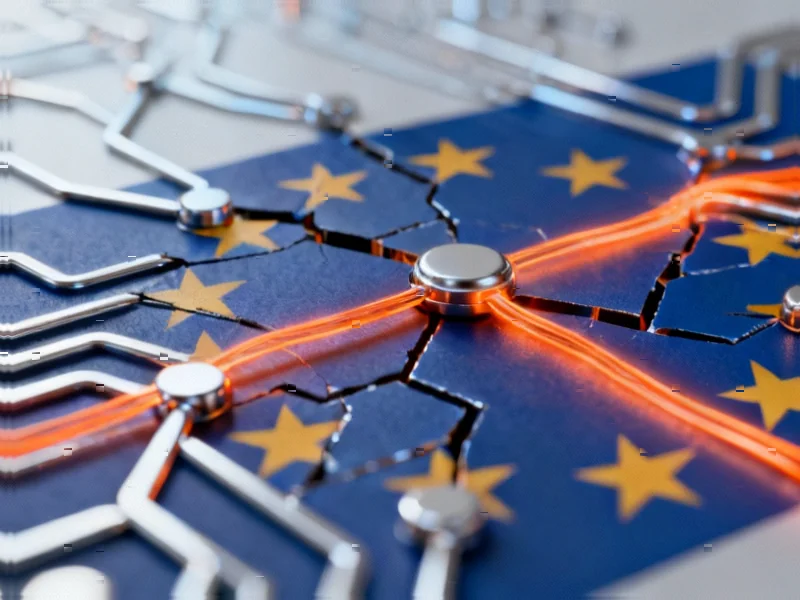Europe’s Strategic Pivot: Reducing External Dependencies
As we approach 2026, European organizations face a critical juncture in their technological evolution. The continent’s deliberate shift toward digital sovereignty represents one of the most significant geopolitical and economic transformations of the decade. This strategic realignment isn’t merely about regulatory compliance—it’s about fundamentally restructuring Europe’s relationship with global technology powers, particularly the United States and China.
Table of Contents
The European Union’s sovereignty initiative extends beyond simple protectionism. It encompasses a comprehensive framework addressing everything from cloud infrastructure and artificial intelligence to semiconductor manufacturing and data governance. This multi-layered approach reflects Europe’s recognition that technological dependence translates to political and economic vulnerability in an increasingly volatile global landscape.
The Three Pillars of Europe’s Sovereignty Strategy
Digital Infrastructure Independence, according to according to reports
Europe’s push to reduce reliance on U.S. hyperscalers represents a cornerstone of its sovereignty agenda. The EU Cloud Services Scheme and GAIA-X initiative aim to create federated, interoperable cloud infrastructure that meets strict European data protection and operational standards. While American providers currently dominate the European cloud market, 2026 will likely see accelerated adoption of homegrown alternatives as regulatory pressure increases and technological capabilities mature.
AI and Technological Self-Sufficiency, according to industry reports
The European approach to artificial intelligence demonstrates a careful balancing act between innovation and control. Through the EU AI Act, Europe is establishing the world’s most comprehensive AI governance framework while simultaneously investing in European AI research and development. The creation of sovereign large language models and AI platforms addresses both competitive concerns and strategic autonomy needs, particularly in sensitive sectors like healthcare, finance, and public administration.
Supply Chain Resilience
Europe’s dependency reduction strategy extends deep into physical supply chains, particularly regarding semiconductors and critical raw materials. The European Chips Act represents a €43 billion investment in semiconductor sovereignty, aiming to double Europe’s global market share to 20% by 2030. This manufacturing independence push reflects lessons learned from recent global disruptions and geopolitical tensions that exposed vulnerabilities in extended supply chains.
Navigating the Legislative Landscape
European businesses face an increasingly complex regulatory environment shaped by multiple intersecting frameworks. The European Green Deal continues to influence technology investment decisions, pushing organizations toward sustainable digital transformation. Simultaneously, the phased implementation of the EU AI Act creates new compliance requirements for high-risk AI applications while prohibiting certain uses entirely.
The UK’s evolving position adds another layer of complexity. While drifting further from EU AI alignment, Britain’s closer cooperation on security and defense creates a bifurcated regulatory landscape that multinational organizations must navigate carefully. This divergence presents both challenges and opportunities for firms operating across European markets.
Strategic Implications for Business Leaders
Technology and Procurement Decisions
European CIOs and technology leaders must reevaluate their vendor selection criteria and technology stack decisions. The sovereignty imperative means that purely cost-based decisions are becoming increasingly untenable. Organizations must balance:
- Compliance with evolving European digital standards
- Integration capabilities with European digital infrastructure
- Data residency and governance requirements
- Long-term strategic alignment with European sovereignty goals
Investment and Innovation Priorities
The sovereignty push creates significant opportunities in several key areas:
- European cloud providers and infrastructure companies
- AI startups focusing on sovereign AI solutions
- Cybersecurity firms addressing European-specific threats
- Semiconductor and hardware manufacturers
- Digital identity and verification platforms
Risk Management Considerations
Organizations must develop sophisticated approaches to managing dependencies on non-European technology providers. This includes:
- Conducting thorough dependency mapping exercises
- Developing transition strategies for critical systems
- Building flexibility into long-term technology roadmaps
- Establishing contingency plans for regulatory changes
The Competitive Landscape in 2026
By 2026, we expect to see a more fragmented global technology ecosystem, with Europe establishing distinct technological identity and capabilities. While complete independence from U.S. technology giants remains unlikely, a rebalancing is inevitable. European firms that successfully navigate this transition will benefit from:
Enhanced Data Protection and Privacy
Europe’s strict data governance frameworks provide competitive advantages in global markets where data protection is increasingly valued.
Regulatory First-Mover Advantage
Early adopters of European standards may gain preferential access to EU public sector contracts and regulated industries.
Innovation in Sovereignty Technologies
The push for technological independence creates fertile ground for innovation in areas like confidential computing, federated learning, and privacy-enhancing technologies.
Preparing for the Sovereignty-Driven Future
European business leaders should approach 2026 with strategic clarity about the sovereignty imperative. This means:
Developing Sovereign Technology Strategies
Organizations need comprehensive plans that address how they will navigate the evolving European technology landscape while maintaining global competitiveness., as previous analysis
Building Strategic Partnerships
Identifying and collaborating with European technology providers and research institutions will become increasingly important for accessing innovation ecosystems aligned with sovereignty goals.
Investing in Talent Development
The sovereignty transition requires specialized skills in European regulatory frameworks, sovereign cloud technologies, and compliant AI development.
As Europe marches toward its 2026 sovereignty objectives, the continent is rewriting the rules of global technology competition. The successful organizations will be those that recognize this isn’t merely a compliance exercise but a fundamental reshaping of Europe’s technological future—one that balances global engagement with strategic autonomy.
Related Articles You May Find Interesting
- China Accelerates AI Integration in Energy Sector as Global Competition Intensif
- Barloworld Nears Delisting as Newco Secures 90.7% Controlling Stake
- Human Connection Emerges as Small Businesses’ Competitive Edge in AI Era, Data R
- Alibaba’s Strategic AI Expansion: Consumer-Focused Smart Glasses and Enhanced Ch
- Government Equity Stakes Spark Quantum Computing Investment Surge and Industry T
This article aggregates information from publicly available sources. All trademarks and copyrights belong to their respective owners.
Note: Featured image is for illustrative purposes only and does not represent any specific product, service, or entity mentioned in this article.



